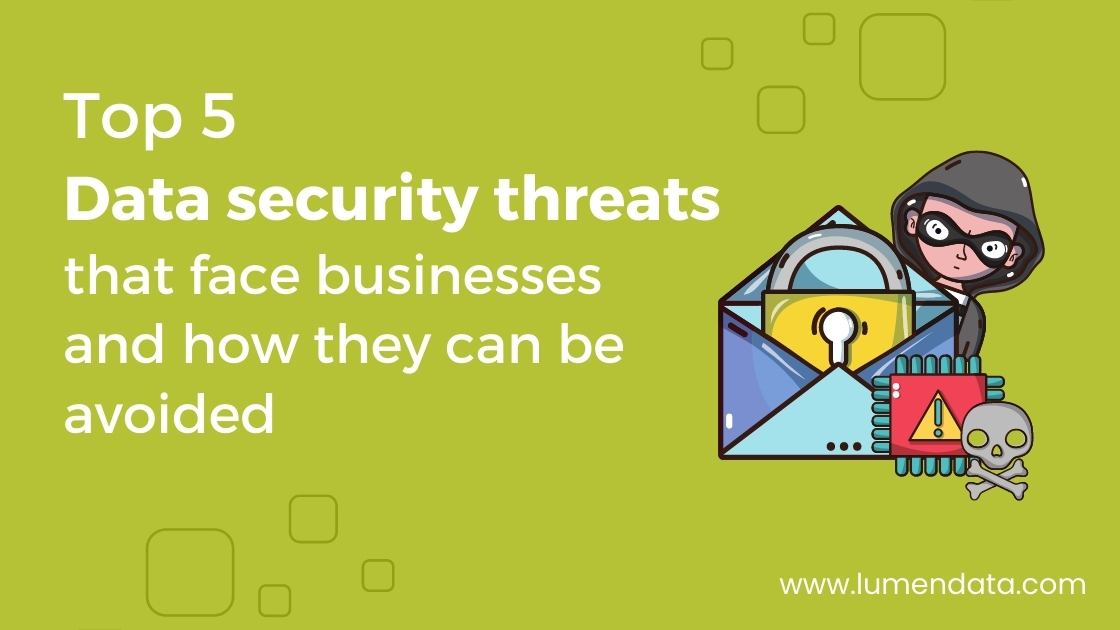With the expansion of privacy regulation efforts across dozens of jurisdictions in the next two years, many organizations will see the need to start their privacy program efforts now. In fact, Gartner predicts that large organizations’ average annual budget for privacy will exceed $2.5 million by 2024.
Protecting data from internal or external corruption and illegal access protects a business from financial loss, reputational harm, consumer trust degradation, and loss of brand image. These aspects coupled with government and industry imposed make it critical for a business to ensure and maintain compliance wherever it does business.
All organizations irrespective of the nature of their business, size, and IT infrastructure are susceptible to data security threats. Let us go through
Top 5 data security threats are:
- Password reuse for emails and applications: Weak password strength is bait for hackers who can exploit the account. Business data is stored across many different accounts and services only protected with login credentials. Strong unique passwords must be created; one may also make use of password manager applications for the same.
- Improper data access control: It is essential to follow the principle of least privilege to ensure that employee access to data is based on their role and responsibilities only. Allowing everyone in the company to access all data may spill out critical and sensitive information like customer information, financials, acquisition plans, etc.
- Skipping data backup: Many businesses, large and small, often overlook the need for periodic data backup. A frequent backup strategy is essential, particularly to protect financial data, intellectual property, source code, and email. A prudent plan will be to start by backing up mission-critical data first.
- Failure to educate employees on common attack threats: Now while human error remains, the bigger aspect is phishing and other popular scams hackers use to entice users. Businesses need to invest in employee cybersecurity education teaching them how to perform without jeopardizing sensitive data.
- Absence of a dedicated security support team: Data security is an overall organizational issue and hence there needs to be a budget to set up a dynamic team that can monitor traffic at all times to detect anomalies. With limited people and budget, it is possible to work with outsourcing security to service providers with the specialized knowledge to properly configure and keep your systems and applications safe. A trusted and experienced third party can manage this for any business such that all security features are in place systematically.
Data Governance and cybersecurity share a common objective- the need to protect valuable data assets and ensure that there is access to high-quality data as applicable. The core of cybersecurity technology is about protecting data infrastructure and security threats. Data Governance complements the objective of cybersecurity measures; it helps pinpoint high-value and high-risk data sets and allocate specific resources to protect the same. The evolving threat landscape and privacy regulations have made Data Governance integral to organizations that need consistent protection from cyber attackers.
A note on Data Governance:
Data governance is a principled approach to managing data during its lifecycle that clearly outlines policies, procedures, responsibilities, and controls around data activities. This program ensures that information is collected, maintained, used, and disseminated ensuring the organization’s data integrity and security needs are adhered to Data governance guidelines typically include policies related to privacy, security, access, and quality. They also cover the roles and responsibilities of those implementing policies and compliance measures. This plays a crucial role in empowering employees to discover and use data to its complete potential.
An ideal data governance practice comprises the following three key components and also helps the business clearly define how data governance is carried out.
- A framework that helps users define, agree to and enforce data policies.
- Effective processes to control, oversee and direct all data assets across on-premises systems, cloud, and data warehouse platforms.
- Determining the right tools and technologies to ensure data policy compliance.
An intelligent and intuitive data governance solution that can extend across both on-premise and cloud data safeguards the business from security threats and also can help derive more business value from such data.



